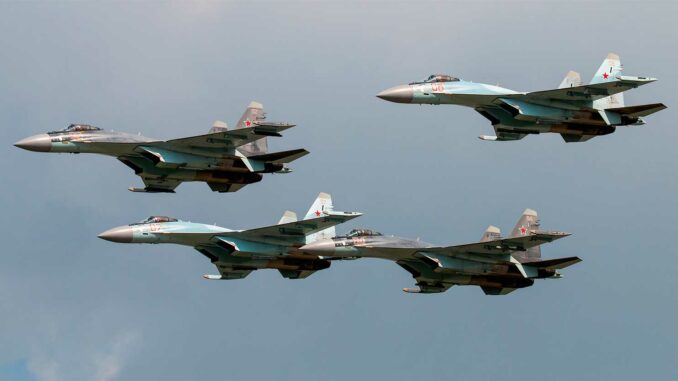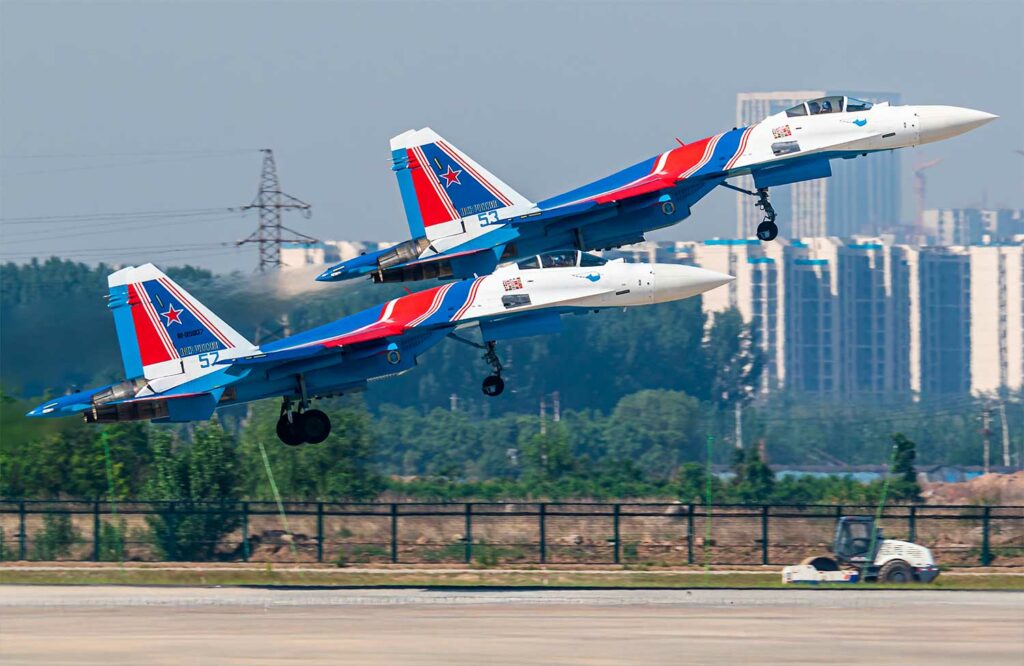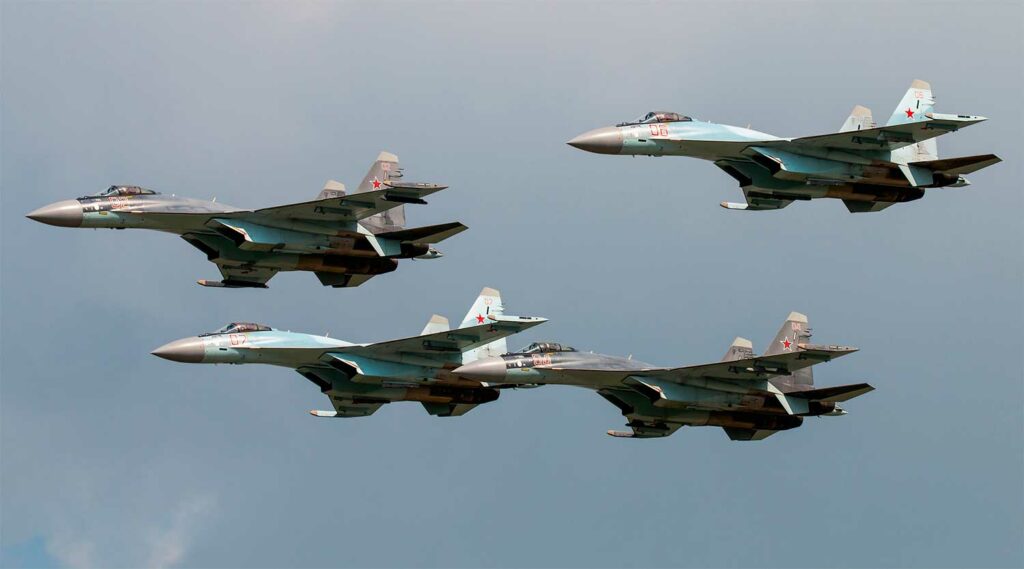
Russia has received a new batch of Su-35S fighter jets, strengthening its air capabilities with these 4++ generation multi-role aircraft.
Russia recently added a new batch of Su-35S fighter jets to its air fleet, marking the second delivery of 2025 after the one in March. These aircraft, produced by the United Aircraft Corporation (UAC) within Rostec, are designed to ensure air superiority and carry out precision strikes. Equipped with advanced technologies such as Irbis-E radar and thrust vector engines, the Su-35S is a key element in the modernization of Russian tactical aviation.
Technical specifications of the Su-35S
The Su-35S is a 4++ generation multirole fighter developed by Sukhoi. It is 21.9 meters long, with a wingspan of 15.3 meters and a height of 5.9 meters. Its maximum takeoff weight is 34,500 kg.
Powered by two Saturn 117S turbofan engines, it can reach a maximum speed of Mach 2.25 (approximately 2,400 km/h) at high altitude. Its practical range is 1,580 km, which can be extended to 3,600 km without in-flight refueling.
The Su-35S is equipped with the Irbis-E radar, capable of detecting air targets up to 400 km away and simultaneously tracking 30 targets, engaging up to 8 of them. It also has the OLS-35 optoelectronic system for infrared detection.
The aircraft can carry up to 8,000 kg of weapons on 12 hardpoints, including air-to-air missiles (R-77, R-73), air-to-ground missiles (Kh-29, Kh-31) and guided bombs (KAB-500, KAB-1500).

Operational capabilities and versatility
The Su-35S is designed to excel in a variety of missions: air superiority, ground strikes, and maritime attacks. Its exceptional maneuverability, thanks to thrust vectoring, allows it to perform complex maneuvers, increasing its survivability in close combat.
Its Khibiny-M electronic warfare system provides protection against enemy radar threats, while the use of radar-absorbing materials reduces its radar signature, improving its stealth.
The Su-35S can operate in difficult weather conditions, day or night, and is capable of long-range missions without refueling, enhancing Russia’s power projection capability.
Production and recent deliveries
The United Aircraft Corporation (UAC), under the umbrella of Rostec, delivered a new batch of Su-35S aircraft to the Russian Ministry of Defense in May 2025, following an initial delivery in March. These aircraft are produced at the Komsomolsk-on-Amur plant, which also manufactures the Su-34 and Su-57.
Since serial production began in 2012, approximately 135 Su-35S aircraft have been delivered to the Russian Air Force. The recent deliveries are part of a modernization program aimed at strengthening the Russian air fleet in the face of current geopolitical challenges.

Strategic implications
The integration of new Su-35S aircraft strengthens Russia’s ability to maintain air superiority in contested areas. These aircraft provide a response to potential threats and increase strategic deterrence.
On the industrial front, continued production of the Su-35S supports the local economy and maintains technological expertise in aeronautics. However, international sanctions and export restrictions may limit opportunities for foreign sales, impacting the program’s profitability.
While Russia is developing the fifth-generation Su-57 fighter, the Su-35S remains a mainstay of its air force. Its combination of advanced technologies and operational versatility makes it a major asset for years to come.
Continued deliveries and production indicate Russia’s willingness to strengthen its military posture despite economic and political challenges. The Su-35S will continue to play a central role in the country’s air defense strategy.
War Wings Daily is an independant magazine.